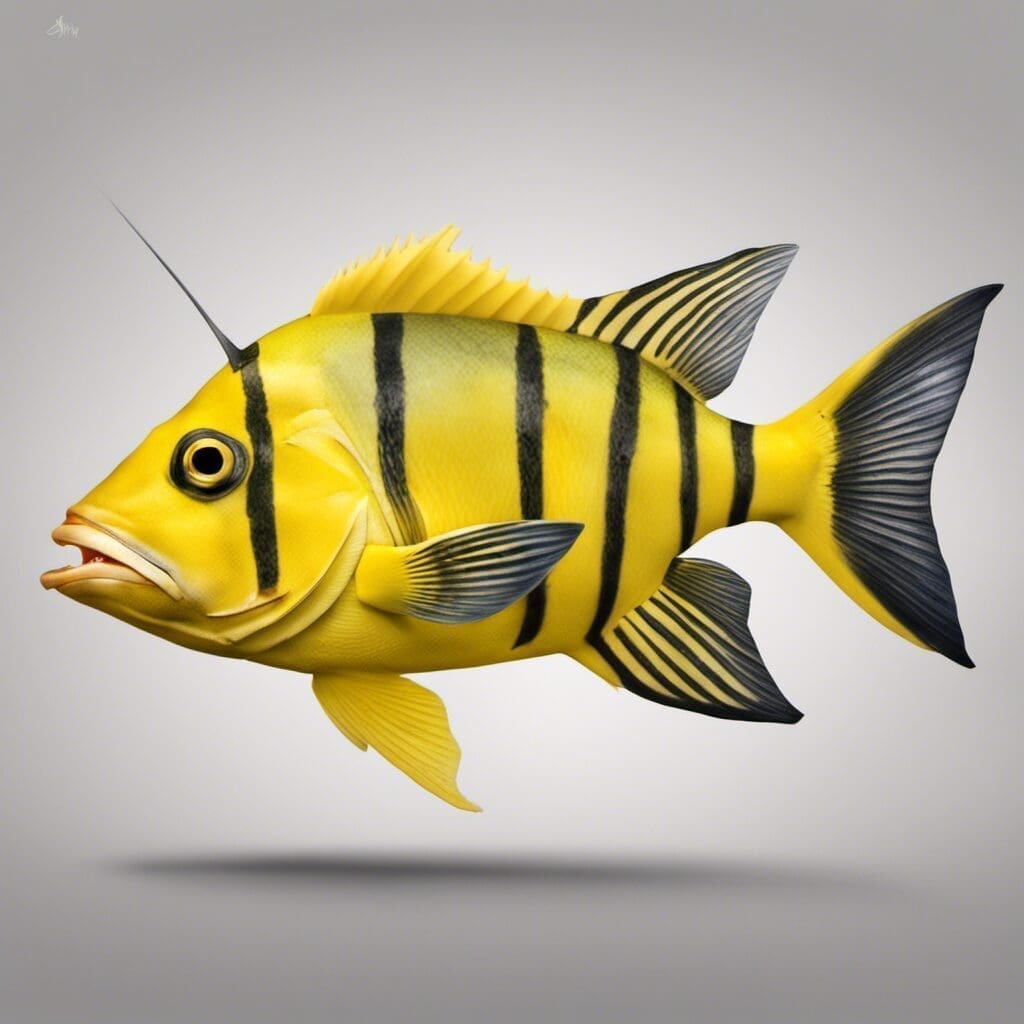Introduction
Species Name and Family Name
The fish we are focusing on is the Porkfish (Anisotremus virginicus), a species belonging to the Haemulidae family, more commonly known as grunt fish due to the grunting sound they produce. Their unique coloration and fascinating behavior make them a sight to behold in the watery world.
Conservation Status
Current Status
Porkfish have a ”Least Concern” status according to the International Union for Conservation of Nature, owing to their vast population and wide geographic distribution.
Conservation Efforts
While Porkfish is not a threatened species, there are still efforts to maintain balanced populations through fishing regulations and limits in some areas, especially in areas where they are significant for recreational fishing.
Statistics
| Statistic | Value |
|---|---|
| Length (Average) | 10-12 inches |
| Weight (Average) | 1-1.5 lbs |
| Lifespan | Up to 10 years |
Distribution
Regions/Countries
Porkfish are predominantly found in the Atlantic Ocean, having a wide range from Florida, USA to Brazil, including the Gulf of Mexico and the Caribbean Sea.
Migration patterns
While Porkfish does not have notable migration patterns, they do move in schools which makes them less predictable.
Habitats
Water Type, Depth Range, and Temperature Range
The Porkfish favors reefs and inshore waters. They typically inhabit subtropical waters and can be found at depths ranging from 2 to 20 meters. They prefer warmer water temperatures, usually found in ranges of 22 to 28 degrees Celsius.
When and Where to See
Seasonal Patterns and Time of Day
The best time to observe Porkfish is during the late spring and early summer months when they tend to be most active. The fish are generally more active during the day.
Best Fishing Locations
Top Fishing Spots
- Key West, Florida, USA
- Cancun, Mexico
- The Bahamas
- Jardines de la Reina, Cuba
- Angra dos Reis, Brazil
General Tips
Look for areas with significant coral reef presence and warmer waters which are preferred habitats for the Porkfish.
How to Catch
Bait, Lures and Techniques
Porkfish can be caught with small squid or shrimp as bait. Standard bottom fishing techniques are sufficient for catching this species.
Identification Guide
Physical Characteristics
Porkfish have distinct colors - they are yellow gold with two black vertical stripes on their body and a black stripe across the eyes. This makes them quite remarkable and easy to distinguish from other species.
Culinary
Cooking, Taste Profile, and Nutrition
Porkfish is not a commonly eaten fish, but it provides a mild and sweet flavor when cooked. It is low in fat and high in protein.
Additional Information
Behavior
Porkfish are usually nocturnal, hiding in the reef during the day and scavenging for food like worms, crustaceans, and small fish at night.
Predators and Threats
The natural predators of Porkfish include larger predatory fish and some shark species. Human-induced threats include overfishing for ornamental purposes.
Cultural/Historical Significance
The Porkfish doesn’t hold a significant cultural or historical value. However, it is appreciated as a colorful addition to aquariums due to its beauty and intriguing behavior.
References and Further Reading
Additional information about the Porkfish can be found in various marine life and fishing guides FishBase and Florida Museum’s Ichthyology Collection.

